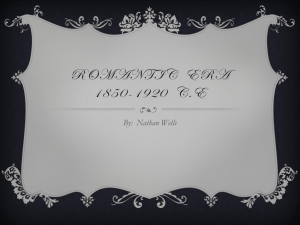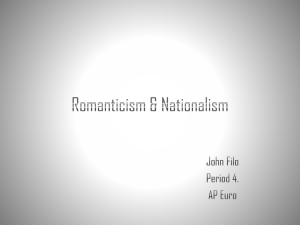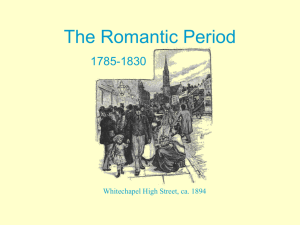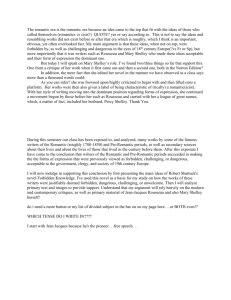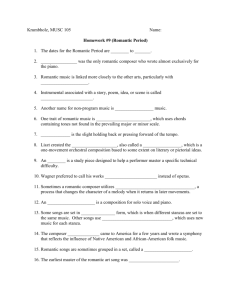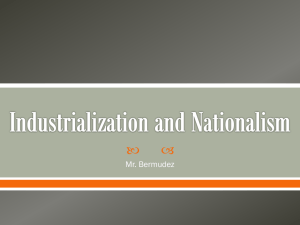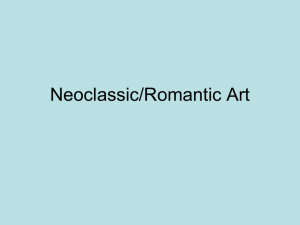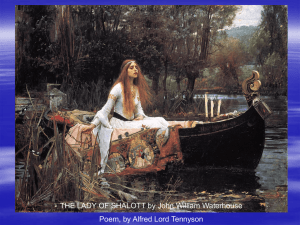ROMANTICISM IN THE 19TH CENTURY (1815
advertisement
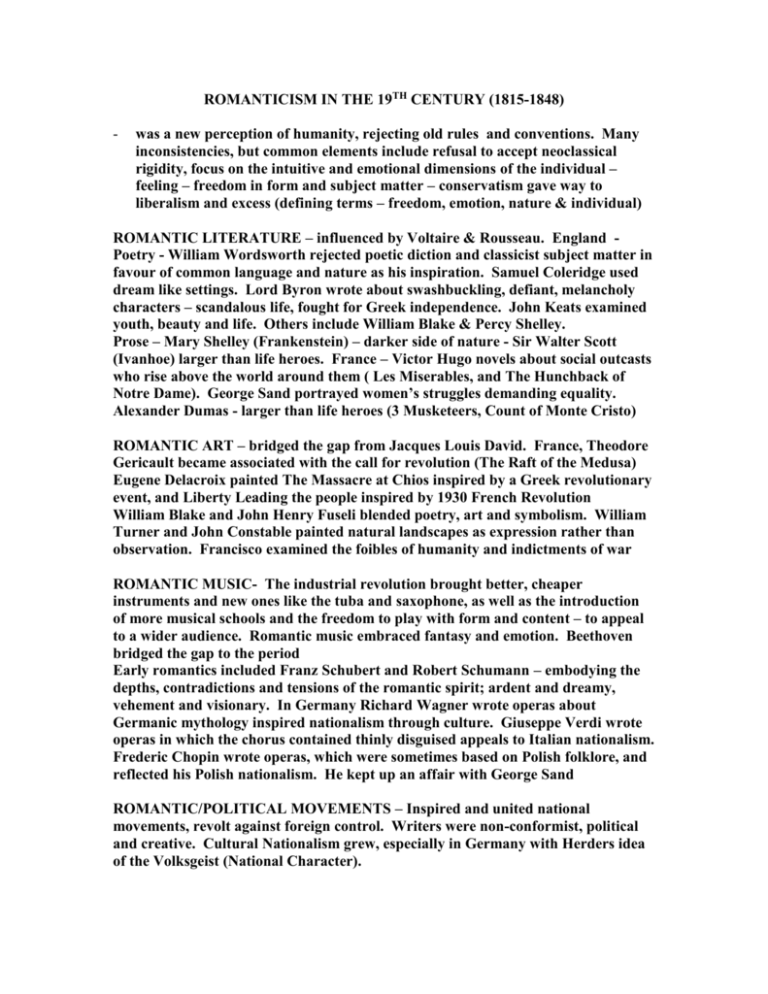
ROMANTICISM IN THE 19TH CENTURY (1815-1848) - was a new perception of humanity, rejecting old rules and conventions. Many inconsistencies, but common elements include refusal to accept neoclassical rigidity, focus on the intuitive and emotional dimensions of the individual – feeling – freedom in form and subject matter – conservatism gave way to liberalism and excess (defining terms – freedom, emotion, nature & individual) ROMANTIC LITERATURE – influenced by Voltaire & Rousseau. England Poetry - William Wordsworth rejected poetic diction and classicist subject matter in favour of common language and nature as his inspiration. Samuel Coleridge used dream like settings. Lord Byron wrote about swashbuckling, defiant, melancholy characters – scandalous life, fought for Greek independence. John Keats examined youth, beauty and life. Others include William Blake & Percy Shelley. Prose – Mary Shelley (Frankenstein) – darker side of nature - Sir Walter Scott (Ivanhoe) larger than life heroes. France – Victor Hugo novels about social outcasts who rise above the world around them ( Les Miserables, and The Hunchback of Notre Dame). George Sand portrayed women’s struggles demanding equality. Alexander Dumas - larger than life heroes (3 Musketeers, Count of Monte Cristo) ROMANTIC ART – bridged the gap from Jacques Louis David. France, Theodore Gericault became associated with the call for revolution (The Raft of the Medusa) Eugene Delacroix painted The Massacre at Chios inspired by a Greek revolutionary event, and Liberty Leading the people inspired by 1930 French Revolution William Blake and John Henry Fuseli blended poetry, art and symbolism. William Turner and John Constable painted natural landscapes as expression rather than observation. Francisco examined the foibles of humanity and indictments of war ROMANTIC MUSIC- The industrial revolution brought better, cheaper instruments and new ones like the tuba and saxophone, as well as the introduction of more musical schools and the freedom to play with form and content – to appeal to a wider audience. Romantic music embraced fantasy and emotion. Beethoven bridged the gap to the period Early romantics included Franz Schubert and Robert Schumann – embodying the depths, contradictions and tensions of the romantic spirit; ardent and dreamy, vehement and visionary. In Germany Richard Wagner wrote operas about Germanic mythology inspired nationalism through culture. Giuseppe Verdi wrote operas in which the chorus contained thinly disguised appeals to Italian nationalism. Frederic Chopin wrote operas, which were sometimes based on Polish folklore, and reflected his Polish nationalism. He kept up an affair with George Sand ROMANTIC/POLITICAL MOVEMENTS – Inspired and united national movements, revolt against foreign control. Writers were non-conformist, political and creative. Cultural Nationalism grew, especially in Germany with Herders idea of the Volksgeist (National Character).
